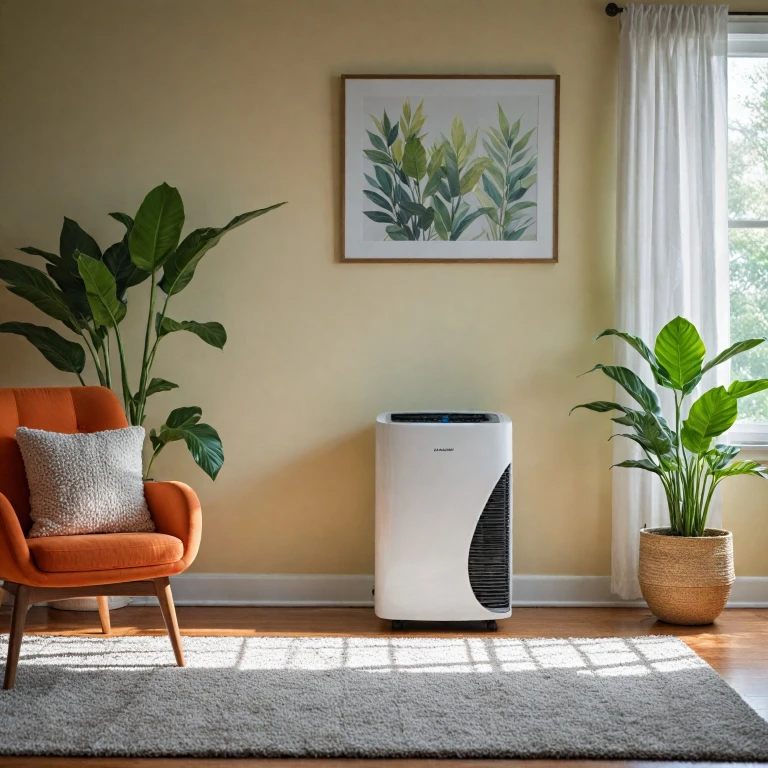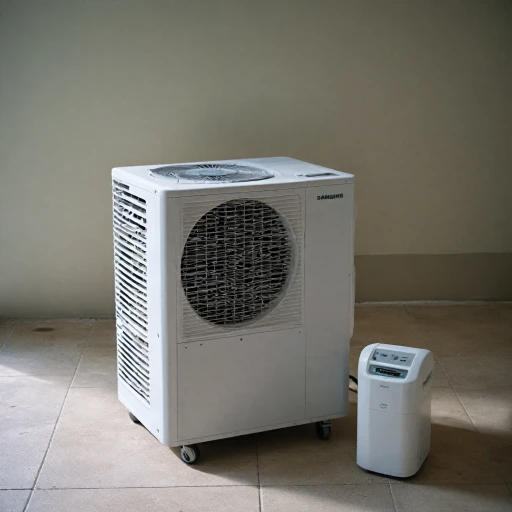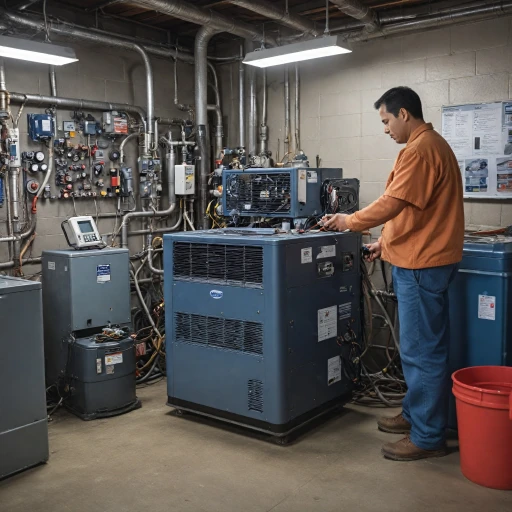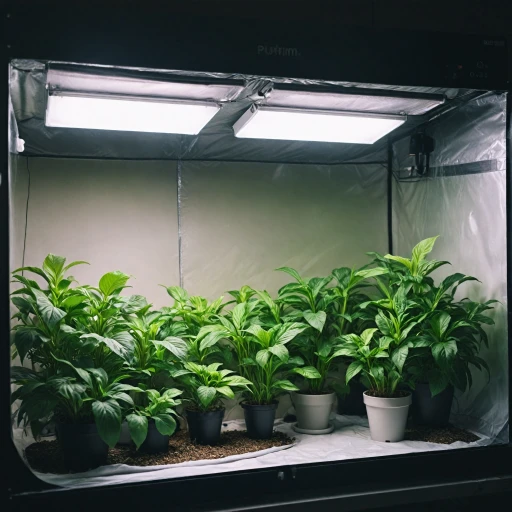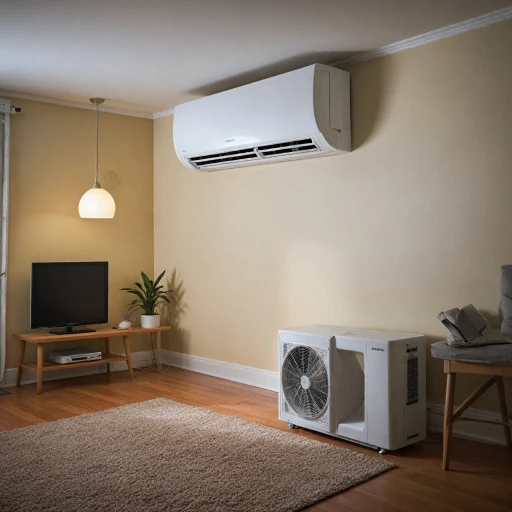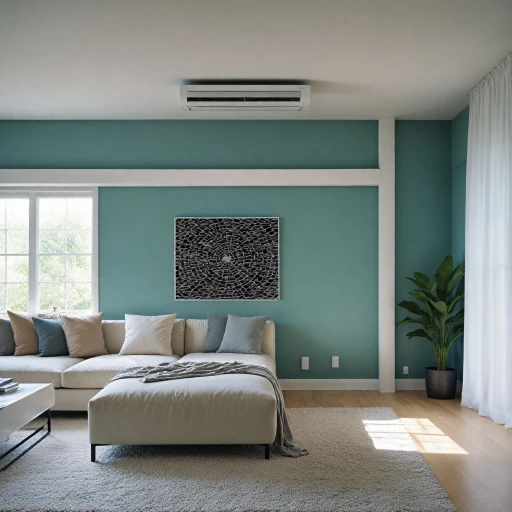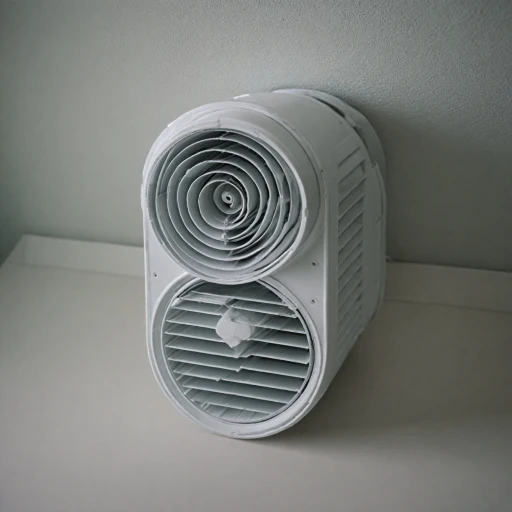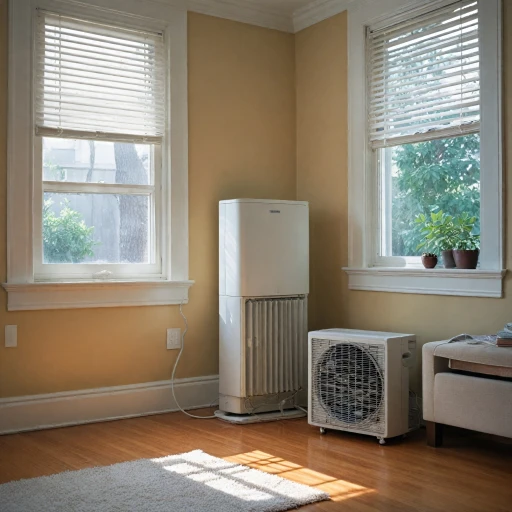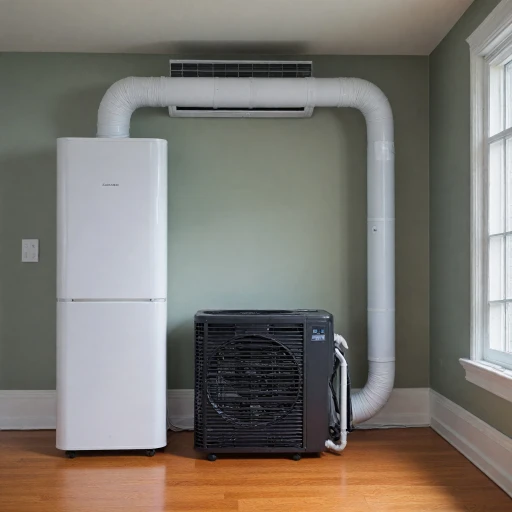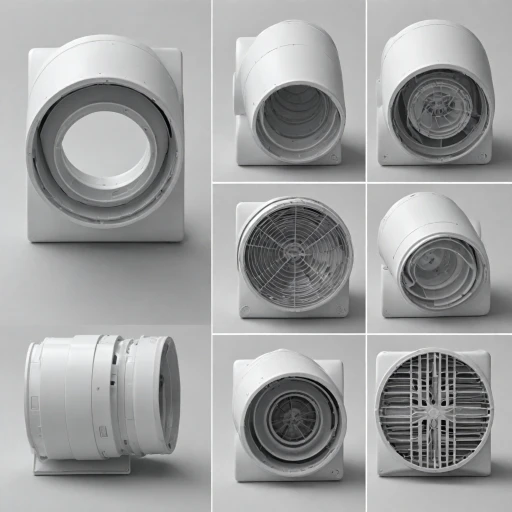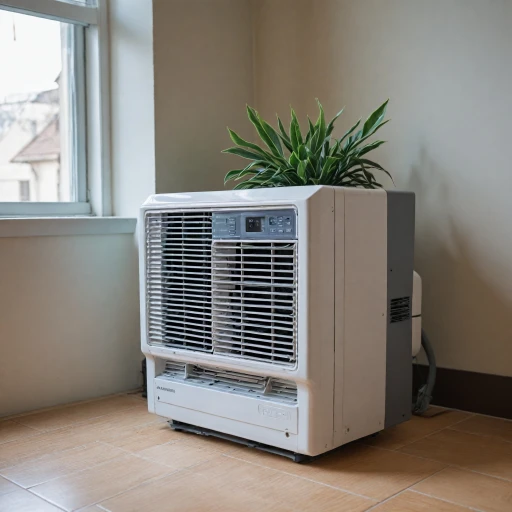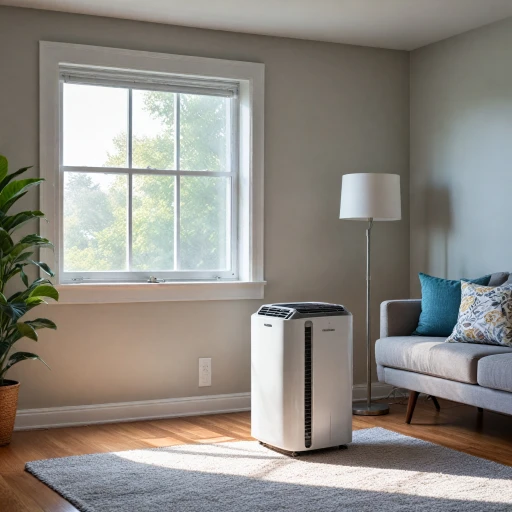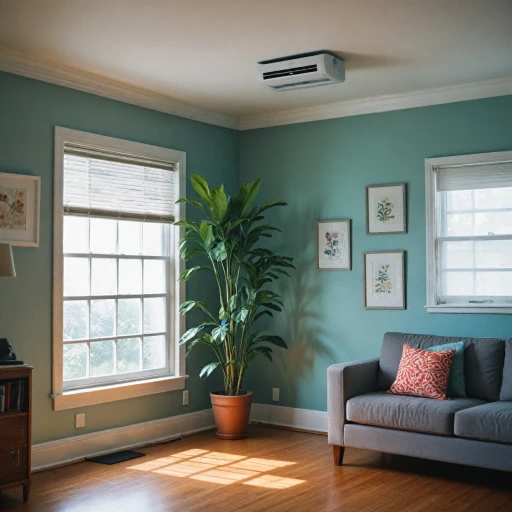
How Portable Air Conditioners Work
Mechanism of Portable Air Conditioners
Portable air conditioners are versatile systems designed to cool individual rooms without the need for complex HVAC installations. Understanding how they operate can provide insight into their effectiveness and versatility. These units function by drawing indoor air into the system, passing it across an evaporator coil filled with refrigerant. This process removes heat and moisture from the air; the moisture is often transformed into condensation, while the heat is expelled outside through an exhaust hose. The cooled air is then circulated back into the room, lowering temperature levels to create a more comfortable indoor environment. It's important to note that during this cooling process, moisture levels are also lowered - an aspect that contributes significantly to improving indoor air quality. High humidity levels can lead to discomfort, making the dehumidifier mode in portable air conditioners crucial in maintaining a steady indoor climate. Portable units typically come equipped with different operational modes, including cool, fan, and dry. The dry mode specifically targets removing excess moisture from the air, which is particularly beneficial in regions experiencing high humidity. This feature not only boosts cooling efficiency but also helps prevent mold and mildew growth, which can compromise air quality and lead to health issues. For those navigating small spaces or temporary living arrangements, these appliances offer a practical solution to centralized air conditioning. By educating yourself on simple concepts such as system operation and maintenance, you can maximize the performance and longevity of your portable air conditioner. To explore more about the components involved, such as the role of duct clamps, head over to the role of duct clamps in portable air conditioners for further insights.The Importance of Dehumidification
The Critical Role of Dehumidification in Portable Air Conditioners
When it comes to maintaining a comfortable indoor environment, controlling humidity levels is just as crucial as regulating temperature. High humidity can make a room feel warmer than it actually is, leading to discomfort and increased reliance on cooling systems. This is where the dehumidification function of portable air conditioners becomes essential.
Portable air conditioners are designed not only to cool the air but also to remove moisture, enhancing indoor air quality. By reducing indoor humidity, these units help prevent the growth of mold and mildew, which thrive in moist conditions. This is particularly important in areas with high humidity levels, where moisture can quickly accumulate.
Dehumidification in portable air conditioners works by drawing in warm, moist air from the room. The air passes over a cold evaporator coil, where the moisture condenses into water droplets. This process effectively lowers the humidity levels, making the air feel cooler and more comfortable. The collected moisture is then either drained away or stored in a reservoir that needs to be emptied periodically.
In addition to improving comfort, dehumidification can enhance the energy efficiency of your cooling system. When the air is less humid, the air conditioner doesn't have to work as hard to cool the room, which can lead to energy savings. This makes portable air conditioners with dehumidifiers an attractive option for those looking to optimize their HVAC system's performance.
For those seeking efficient cooling solutions, especially in small spaces like campers, understanding the role of dehumidification is key. You can explore more about efficient cooling solutions for campers to see how portable air conditioners can be a game-changer in such environments.
Dehumidifier Functionality in Portable Units
Enhancing Comfort Through Moisture Removal
Portable air conditioners not only provide a cool breeze during those sweltering days but are also equipped with a key feature: dehumidification. As these units cool the air, they simultaneously remove moisture. This dual action is pivotal in maintaining an optimal indoor environment, preventing the discomfort associated with high humidity levels. The effectiveness of dehumidifiers within portable air conditioning systems can be attributed to their ability to absorb indoor humidity and convert it into water. This collected moisture is then either evaporated or stored in a container to be emptied manually. The reduction in indoor humidity not only improves air quality but also prevents the formation of mold and mildew, common issues in high humidity environments. Moreover, portable air conditioners with a dehumidifying function can improve energy efficiency by allowing the system to use less energy to maintain consistent room temperature. Reduced moisture levels enable the air conditioner to achieve and sustain a designated cooling mode more efficiently. For those concerned about sustainability and utility costs, this feature offers a notable benefit. For more in-depth information on understanding the role of a 6-inch insulated flex duct in portable air conditioners, explore our other articles, which delve into system components essential for effective cooling.Benefits of Using a Portable Air Conditioner with a Dehumidifier
Maximizing Comfort with a Portable Air Conditioner and Dehumidifier
When investing in a portable air conditioner equipped with a dehumidifier, you can experience a myriad of benefits that enhance indoor air quality and comfort. These dual-function units efficiently remove moisture from the air while providing cool air, making them ideal for maintaining balanced humidity levels, especially in spaces where central air systems might not reach. Utilizing a portable unit with dehumidification capabilities can significantly improve indoor air conditions by addressing high humidity. This is crucial in preventing problems such as mold mildew, which thrive in damp environments. By maintaining optimal indoor humidity, not only do you protect your living space from potential damage, but also enhance the overall indoor environment. Moreover, these units contribute to energy efficiency. Instead of relying on both a separate air conditioner and dehumidifier, a combination unit can handle both operations. This means less energy consumption, as the system efficiently switches between cooling and dehumidifying modes, depending on the room's needs. Additionally, the ability to adjust humidity and temperature will likely make your indoor environment more comfortable. No longer do you have to contend with the discomfort that high humidity and heat can cause. The portable air conditioning systems provide consistent and reliable cooling, adapting to changes in indoor humidity and air conditions with ease. Overall, choosing a portable air conditioner with the capability to dehumidify will enhance your HVAC system's efficiency during varying humidity levels and temperatures. It's important to ensure your selected unit is adequate for the room's size and has the necessary features for effective humidity control, contributing to a healthy and comfortable indoor climate.Choosing the Right Portable Air Conditioner with Dehumidifier
Selecting the Best Portable Unit for Comfort
Choosing the right portable air conditioner with a dehumidifier function involves careful consideration of several factors to ensure maximum efficiency and comfort in your indoor environment. Here's a guide to help you make an informed decision:- Cooling and Dehumidification Capacity: Check the cooling capacity (measured in BTUs) appropriate for the size of your room. A higher capacity unit will effectively cool larger spaces. For humidity control, ensure the dehumidification capacity matches your indoor air needs, which is important for maintaining optimal humidity levels and preventing mold mildew.
- Energy Efficiency: Opt for units with high energy efficiency ratings. Energy-efficient portable air conditioners and dehumidifiers can reduce electricity consumption while maintaining consistent indoor temperatures, helping keep energy bills in check.
- Noise Levels: Consider the noise level, especially if you plan to use the unit in a bedroom or a home office. Portable air conditioners with a quieter operation mode or dehumidifier air mode can enhance comfort without creating distractions.
- Features and Functionality: Look for additional settings such as a dry mode, which allows the unit to remove moisture without excessive cooling, improving indoor air quality. Features such as programmable timers, remote controls, and multiple operating modes can greatly enhance convenience.
- HVAC System Compatibility: If you're using a central hvac system, ensure that the portable unit can work in tandem with it without conflicting temperature and humidity settings. This compatibility also applies to using air conditioners in tandem with heat pumps.
- Portability and Installation: Ensure the unit is easy to move, especially if you'll transfer it between rooms. Furthermore, check the installation requirements, particularly the setup of the exhaust system.
Maintenance Tips for Optimal Performance
Maintaining Your Portable Air Conditioner for Optimal Functionality
Proper maintenance of your portable air conditioner is crucial for ensuring it continues to efficiently cool your indoor environment while also maintaining effective humidity control. Regular upkeep will not only extend the life of your unit but also improve the air quality in your space. Here are some essential tips for maintaining your portable air conditioner:- Frequent Filter Cleaning: Dust and debris can accumulate on the filters, hindering the flow of cool air. Regularly cleaning or replacing the filters helps maintain optimal air flow and energy efficiency.
- Condensate Removal: As your portable air conditioner operates, it will naturally remove moisture from the air. Ensure that the condensate tank is emptied frequently to prevent overflow and potential water damage.
- Check the Vents: To maintain high cooling and dehumidification performance, keep the exhaust and intake vents clear of obstructions. Clean them periodically to prevent dust buildup that can restrict airflow.
- Regular Inspection: Periodically check for any signs of wear or damage, especially in the hoses and seals, which can impact the unit’s ability to cool your room effectively. Pay attention to any unusual noises, which might indicate a need for repair.
- Monitor Humidity Levels: Adjust the settings on your unit to maintain comfortable indoor humidity levels. Running the air conditioning or heat mode can affect indoor humidity, so switch to the dehumidifier air function when needed.
- Storage Tips: If you need to store the unit during cooler months, clean it thoroughly and ensure it is completely dry. Store it in a cool, dry place to prevent mold and mildew growth.
